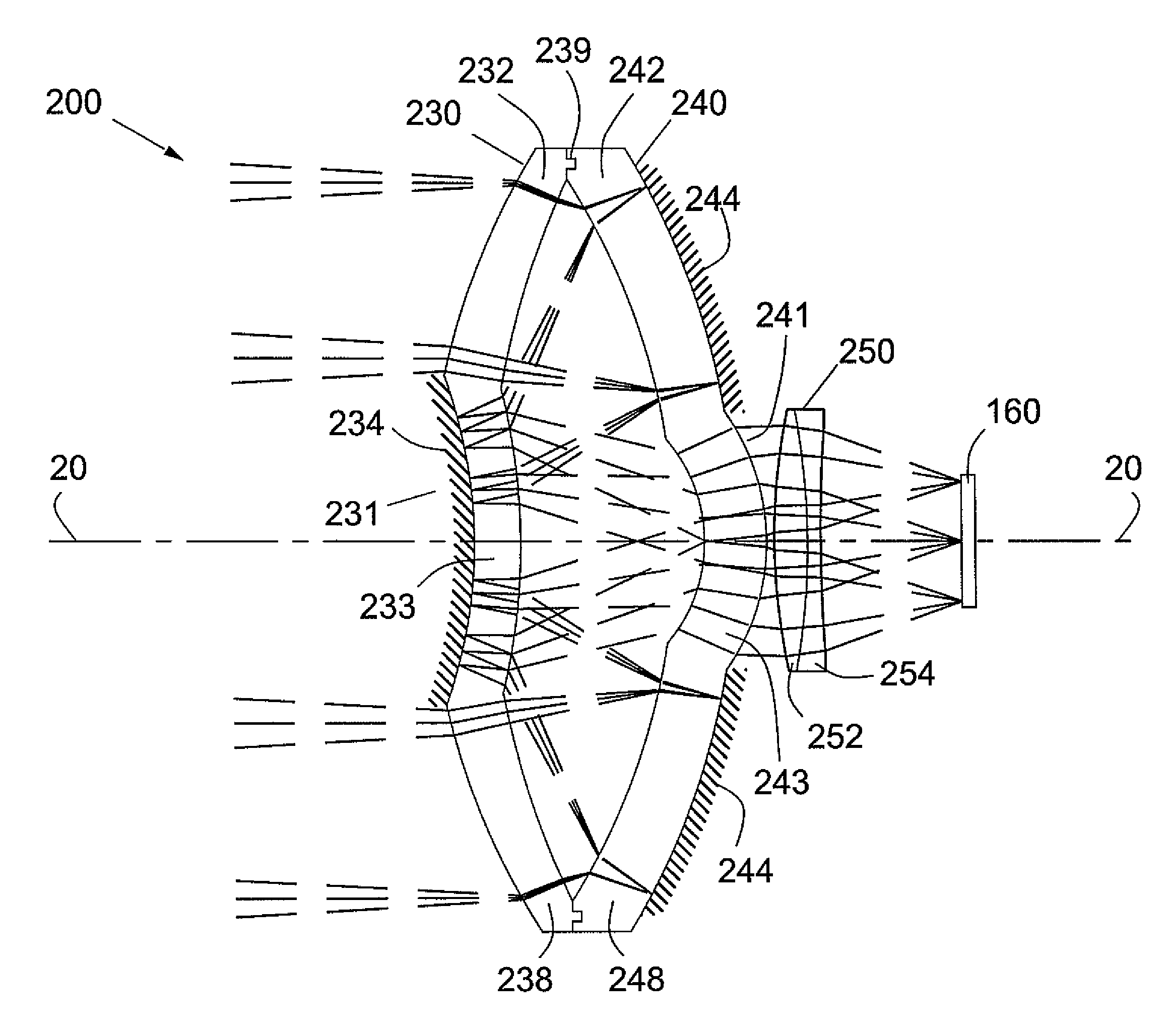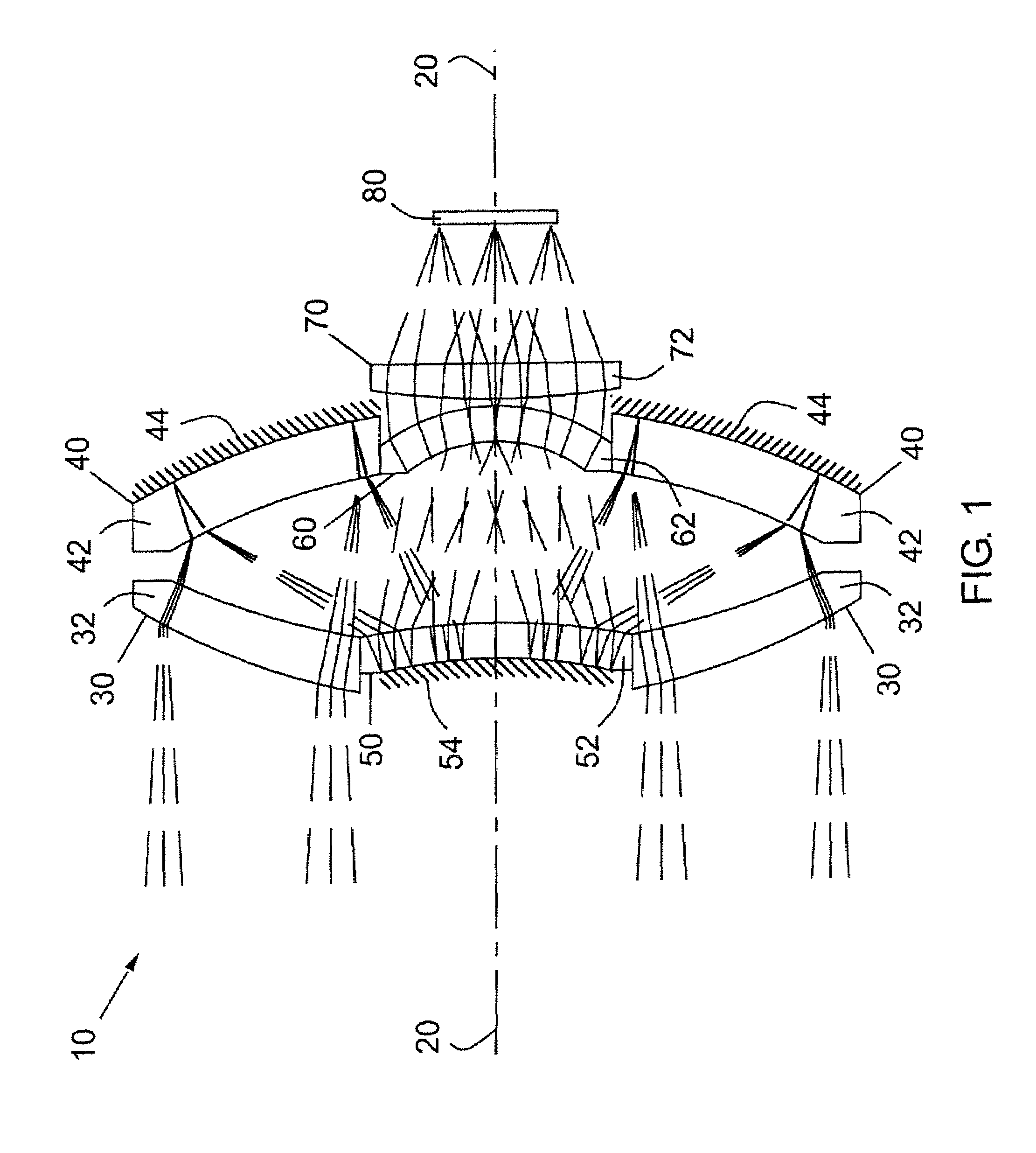Compact fast catadioptric imager
a catadioptric imager, compact technology, applied in the direction of optics, instruments, optics, etc., can solve the problems of limited compactness, achieve the effect of maintaining telecentricity in image space, limiting compactness, and minimizing the obscuration of optical rays
- Summary
- Abstract
- Description
- Claims
- Application Information
AI Technical Summary
Benefits of technology
Problems solved by technology
Method used
Image
Examples
Embodiment Construction
[0026]An optically fast, telecentric catadioptric imager is disclosed hereinbelow.
[0027]Reference is made to FIG. 1, which is a schematic sectional view of an embodiment of this invention 10, taken along the optical axis 20, the optical prescription for which is given in Table 1. In the operation of this embodiment, electromagnetic radiation, typically in the ultraviolet, visible, and / or infrared bands, hereinafter referred to generally as light, emitted or reflected by a given object, either real or virtual, hereinafter also referred to as a source, is incident upon a first, or hereinafter termed “corrector”, group of optical elements 30. This corrector element group is similar to that of the Bouwers and Maksutov imaging systems, and is comprised of a refractive element or combination of refractive elements, in this embodiment consisting of element 32, having a combined positive or convergent optical power. A portion of the light that is transmitted by the corrector group 30 is nex...
PUM
 Login to View More
Login to View More Abstract
Description
Claims
Application Information
 Login to View More
Login to View More - R&D
- Intellectual Property
- Life Sciences
- Materials
- Tech Scout
- Unparalleled Data Quality
- Higher Quality Content
- 60% Fewer Hallucinations
Browse by: Latest US Patents, China's latest patents, Technical Efficacy Thesaurus, Application Domain, Technology Topic, Popular Technical Reports.
© 2025 PatSnap. All rights reserved.Legal|Privacy policy|Modern Slavery Act Transparency Statement|Sitemap|About US| Contact US: help@patsnap.com



